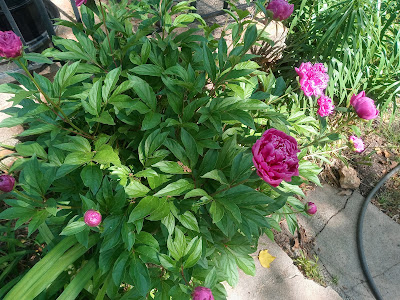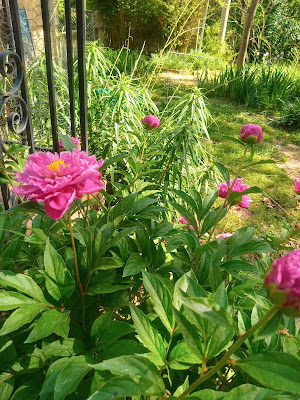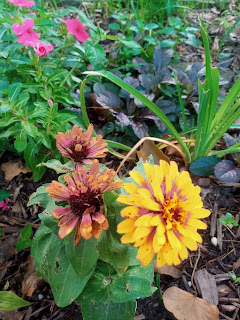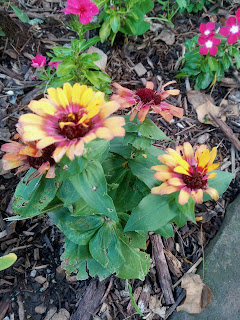If you enjoy watching butterflies and hummingbirds then plant the Nice Gal Peony. This peony is a stunning pink flowering shrub that will add beauty to your garden with its large pink flowers with yellow stamens.
The peonies were planted in fertile well-drained soil where there were 6 hours of full sun daily. The bare root grew into a small shrub in the first year with lush green leaves but did not bloom for two years. The first time that the peony bloomed the flowers were small and I attributed this to the overhand of an Oak tree that had grown in.
The following fall I decided to transplant
even though I knew that disturbing the peony may mean it may not boom the
following year. I took the chance and
moved the nice gal to another area where there was no chance that trees would
block the sun.
I transplanted the peony on a cloudy day,
and it was planted deep in well-drained fertile soil that was amended with
compost. I watered well and did not
allow the soil to dry out. This new
location provided the peony with 6 hours of full sun and part shade. I applied a layer of mulch to protect the newly
rooted shrub and after the first frost, I cut back the stems to the soil and
applied a thicker layer of natural hardwood mulch.
This year I changed my fertilizer. I used Jobes stakes for flowering shrubs.
The stakes were put into the soil in late March / early spring. The fertilizer stake would feed the peony
slowly throughout the growing season.
In April the spring rain was plentiful, the days were warm and the nights were cool. The weather and the fertilizer agreed with my pink gal peony because it grew into a sturdy bush with lush green leaves and big flower buds. The entire bush was covered with flower buds and the blooms were magnificent.
Here are some photographs of my beautiful Nice Gal Peony shrub.
























